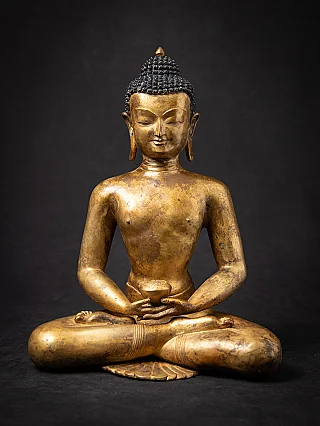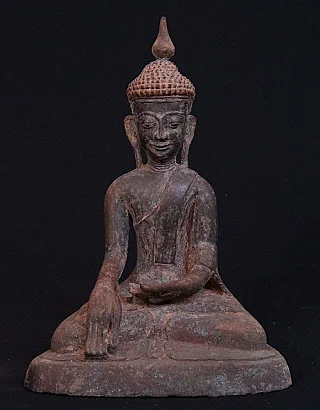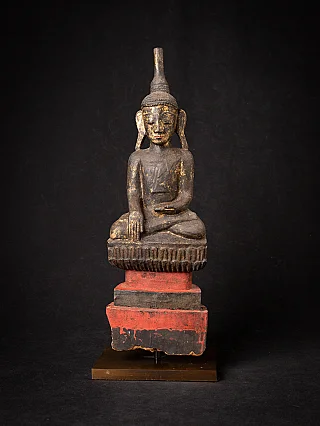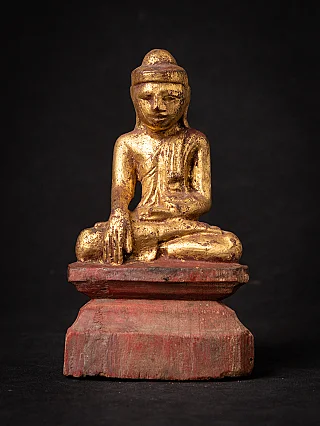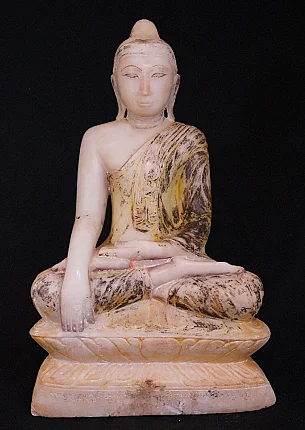Ashoka - Preacher of Buddhism
Author : Peter Vredeveld

Ashoka - The Great Emperor, who won many battles with his brave soldiers, was a preacher of Buddhism
Emperor Ashoka, widely recognized as "Ashoka The Great," is an immense figure in Indian history, leaving an indelible mark on the subcontinent. Born in 304 BC into the formidable Mauryan Dynasty, Ashoka's reign marked a pivotal era in the region's history, witnessing territorial expansion and the profound personal transformation of the emperor into a passionate advocate of Buddhism.
Early Life of Ashoka
Ashoka's early life was immersed in the intricacies of succession politics. Born to Emperor Bindusara, the young prince faced challenges following his father's demise in 272 BCE. The power struggle within the royal family found resolution with the support of Minister Radhagupta, who played a pivotal role in ensuring Ashoka's ascent to the throne. During this period, he laid the groundwork for a reign destined to alter the course of history.
Ashoka's Enigmatic Rule and Imperial Growth
- Ashoka's Hell and Governance Complexities:
- The establishment of "Ashoka's Hell," a legendary torture chamber mentioned in Buddhist texts, remains a subject of debate.
- It underscores the complexities of Ashoka's character and the governance challenges inherent in ruling a vast empire.
- Imperial Expansion and Cultural Flourish:
- Concurrently, Ashoka's reign witnessed the Mauryan Empire attaining unprecedented heights.
- The Indian subcontinent experienced territorial expansion, solidifying the Mauryan Empire as one of the largest and most influential kingdoms of its time. The capital, Pataliputra, flourished as a hub of governance, culture, and commerce.
Kalinga War and a Pivotal Shift
The Kalinga War in 261 BCE emerged as a turning point in Ashoka's life and reign. The conflict between the Mauryan Empire and the state of Kalinga resulted in significant loss of life, with estimates suggesting 150,000 casualties on the Kalinga side and 100,000 on the Mauryan side. The aftermath deeply affected Ashoka, prompting reflections on the morality of warfare and the human cost of conquest.
Embrace of Buddhism and Edicts of Ashoka
- Transformative Journey and Acceptance of Buddhism:
- Haunted by the traumas of war, Ashoka underwent a transformative journey culminating in his acceptance of Buddhism.
- The emperor renounced violence, embracing a philosophy of non-violence and compassion. This marked a profound shift in his policies, as he sought to govern based on the principles of Dharma, advocating for moral and ethical conduct.
- Edicts of Ashoka and Governance Principles:
- Ashoka inscribed edicts on pillars and rocks throughout his empire to propagate his newfound beliefs.
- Known as the Edicts of Ashoka, these mandates conveyed his commitment to justice, tolerance, and the welfare of his subjects, testifying to his efforts to foster a more humane and just society.
Contributions to Buddhism

- Promotion and Patronage of Buddhism:
- Wholeheartedly embracing Buddhism, Ashoka became a fervent patron of the faith, diligently working to disseminate its teachings.
- He erected Ashoka Pillars, with the most renowned one situated in Lumbini, the birthplace of Buddha. The Lion Capital of Ashoka, featuring four lions, emerged as an iconic symbol associated with the emperor.
- Lion Capital of Ashoka:
- The Lion Capital, featuring four lions, emerged as an iconic symbol associated with the emperor.
- This sculpture, located at Sarnath, serves as the national emblem of India, reflecting Ashoka's commitment to Buddhism and righteous rule.
Legacy and Lasting Influence
Emperor Ashoka's legacy extends beyond the territorial expanse of his empire, manifesting significantly in his profound impact on the course of Buddhism and his endeavors to promote more compassionate and ethical governance. His legacy lives on through the Ashoka Chakra, a prominent symbol on the Indian national flag, representing the principles of Dharma and justice.
Conclusion
Ashoka The Great is a towering figure renowned for his military conquests and an introspective journey toward compassion and enlightenment. His narrative inspires generations, offering a poignant reminder of the transformative power of personal conviction and ethical leadership.
Frequently Asked Questions (FAQs)
- How accurate is the historical account of "Ashoka's Hell"?
The accuracy of "Ashoka's Hell" remains a subject of scholarly debate, with varying interpretations of its existence and significance.
- How did the Kalinga War impact Ashoka's perspective and governance?
The Kalinga War prompted deep reflections on the morality of warfare, leading to Ashoka's embrace of Buddhism and a shift towards moral governance.
- How did Ashoka promote Buddhism, and what are his enduring contributions to the faith?
Ashoka actively promoted Buddhism, constructing Ashoka Pillars and the Lion Capital, iconic symbols associated with his dedication to the faith.
- What principles did Ashoka emphasize in his governance, as reflected in the Edicts of Ashoka?
The Edicts of Ashoka convey his commitment to justice, tolerance, and the welfare of his subjects, reflecting his efforts to create a more humane and just society.
- What is the enduring significance of Ashoka's legacy, especially the Ashoka Chakra?
Ashoka's legacy endures through symbols like the Ashoka Chakra, representing the principles of Dharma and justice on the Indian national flag.
Share this page


























